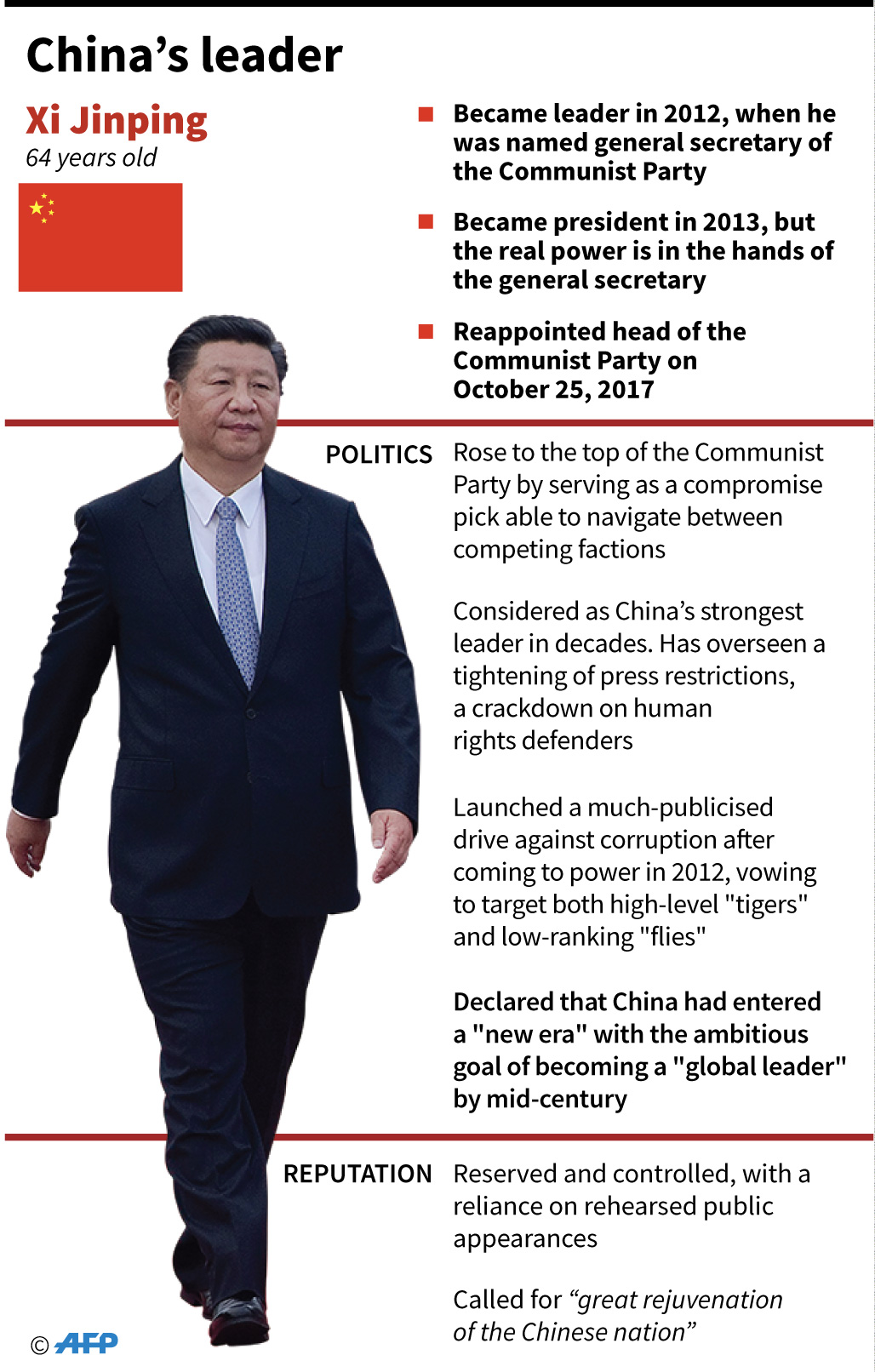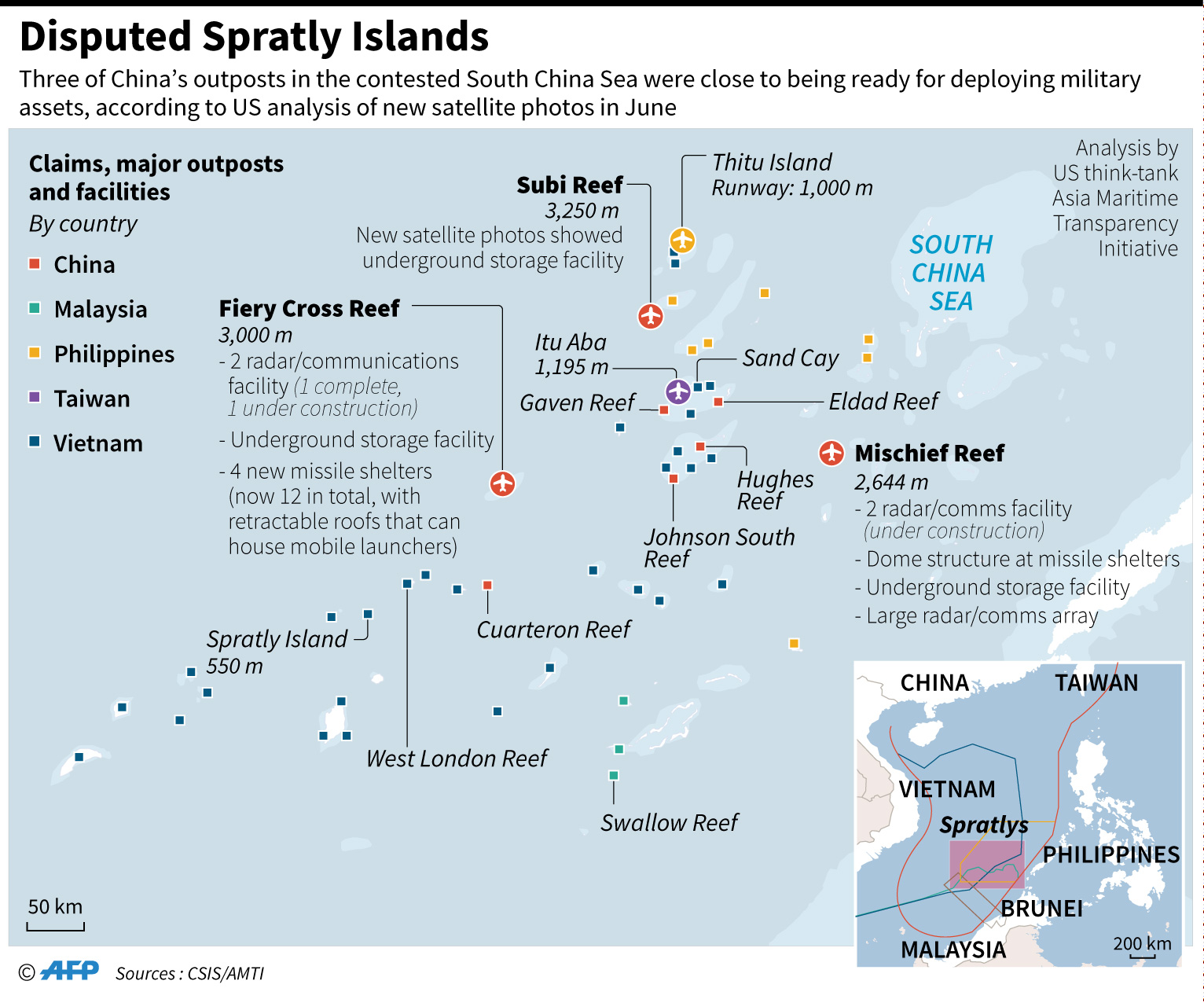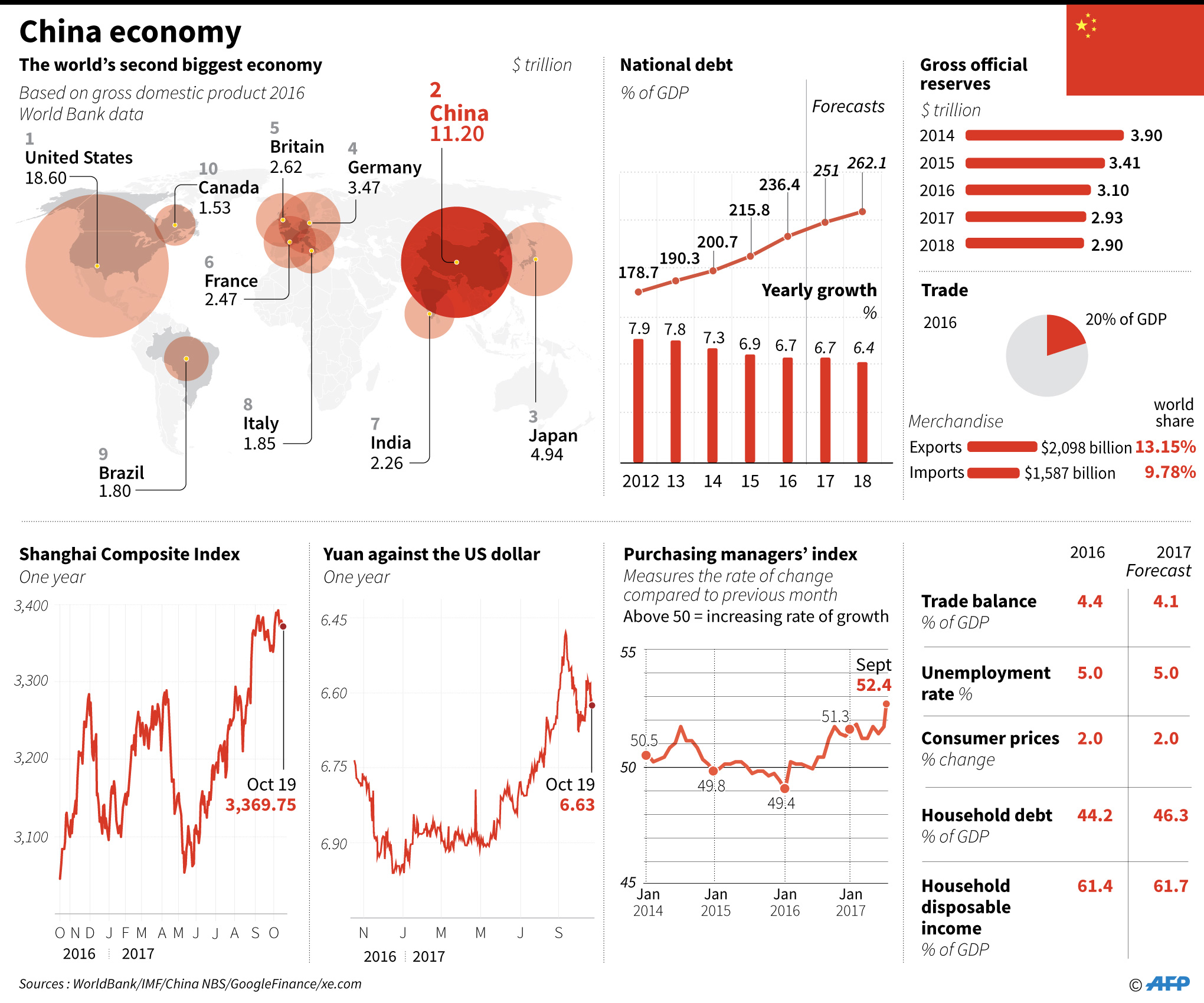Chinese President, Xi Jinping’s marathon speech at the quinquennial 19th Chinese Communist Party Congress painted a picturesque vision for China’s future. The lengthy three-hour speech touched on his achievements during his first term as the country’s president and set a roadmap of things to achieve in the upcoming five years during his second term.
Speaking to 2,300 delegates and guests present at the Great Hall of the People, he called for the “rejuvenation of the Chinese nation” and envisioned China to be a “strong modern nation.”
Xi has grand plans and whatever he has in mind for China will undoubtedly impact the geopolitics of the wider East Asian neighbourhood, reaching the shores of Southeast Asia.

Graphic on China's leader, Xi Jinping.
Discerning the intentions of the Chinese military
In his long-term vision, Xi sees China becoming a “leading global power” by 2050 with a “world class military” – one that can fight, and most importantly win wars. Rhetoric like that is to be expected at a nationalistic event like this congress. However, taking a step back at looking at the wider picture of a bolstered Chinese military against the backdrop of rising East Asia geopolitical tensions, one thing stands out – the South China Sea dispute.
Already being infamous for militarising the disputed area, China made the news recently when the Chinese South Fleet established a marine rescue squadron which military analysts tout as being capable of significantly improving the navy’s combat capabilities.

Map showing military assets built on disputed Spratly Islands by China, according to analysis published in June by US think-tank Asia Maritime Transparency Initiative.
The strategic implication of such a move is still open to interpretation to all parties involved surmised Collin Koh, a naval affairs expert attached with the Rajaratnam School of International Studies in an email interview with The ASEAN Post.
Koh explained that while this also constitutes to Beijing building up their maritime forces in the region, China has the opportunity here to mould perception and come off as a responsible stakeholder contributing towards confidence-building in the South China Sea.
“The most immediate effect would be other parties take notice, and view it as a sign of ramped up submarine presence. But in the long-term, the Chinese do have the opportunity to shape perceptions if they use this unit actively for various peacetime, benign missions such as search-and-rescue and salvage,” he said.
If it does decide to do so, China could very well brand itself as the key provider of global public goods – which in this case is safe maritime passage – in the region. That position is currently being held by the US which also has a formidable military presence in Southeast Asia. The current trend demonstrates that military engagements could occur separately between the Association of Southeast Asian Nations (ASEAN), its members and both global superpowers – ASEAN-US or ASEAN-China but never all three at once – which reinforces the notion that both powers are likely to battle to be the primary provider of global commons in the region in the future.
What is driving Chinese generosity?
XI also outlined his economic reforms that aim to achieve his special brand of socialist modernisation by 2035, proclaiming that the Chinese economy “has moved from a stage of high growth to a stage of high quality growth.”

Graphic charting China's main economic indicators.
But what is likely to have a long-lasting impact on the Southeast Asian region is the grandiose Belt Road Initiative (BRI) – a trillion-dollar infrastructure development spending spree with the ambition of placing China at the crux of the economic order.
What’s even more astonishing is the decision to amend the party charter to include a pledge “to pursue the Belt Road Initiative.” Such a step is likely to cement the initiative as part of the nation’s agenda in the years to come. As Rome wasn’t built within a day, so will the BRI for decades to come, and it is vital it remains in the Chinese to-do-list until its targets are achieved.
Already, rail connections are being developed at a preliminary stage in countries like Malaysia, Thailand, Singapore and Lao which aimed at improving land connectivity in the region. In time to come, the BRI would facilitate the building of roads, upgrading of ports and establishment of trading hubs around the region.
Beijing makes no qualms about doling out loans via its state-owned enterprises to the tune of billions to help finance these projects. In doing so, China has struck fear that its actions may be seen as a way of placing these countries under its economic orbit instead of portraying the country as a benevolent investor, not motivated solely by self-interest.
In a policy paper released by the China Policy Institute, a research centre based at the University of Nottingham, author Munmun Majumdar, an Associate Professor at North-Eastern Hill University, warned of the lack of transparency of the Chinese economy may throw doubt on China’s real intentions with the BRI.
“The opaque nature of the workings of the Chinese economy makes the countries of the region feel that in the times to come they may be forced to reciprocate Chinese regional and global interests. A serious concern in Southeast Asia is that China may use economic incentives as a tool to engulf these countries in a cooperation that will threaten the ASEAN way and ASEAN unity,” Majumdar wrote.
Xi looks poised to bring China to a new era of socialist rebirth with his far-sighted agenda. An agenda to reclaim China’s great power status and presenting itself as a buttress to Western ideals. Xi’s embrace of neoliberal economics coupled with a tidal wave of nationalism promises to create a powerful force in the wider East Asia neighbourhood.
ASEAN must be prepared for what’s in store for the region in the coming years.
Recommended stories:
